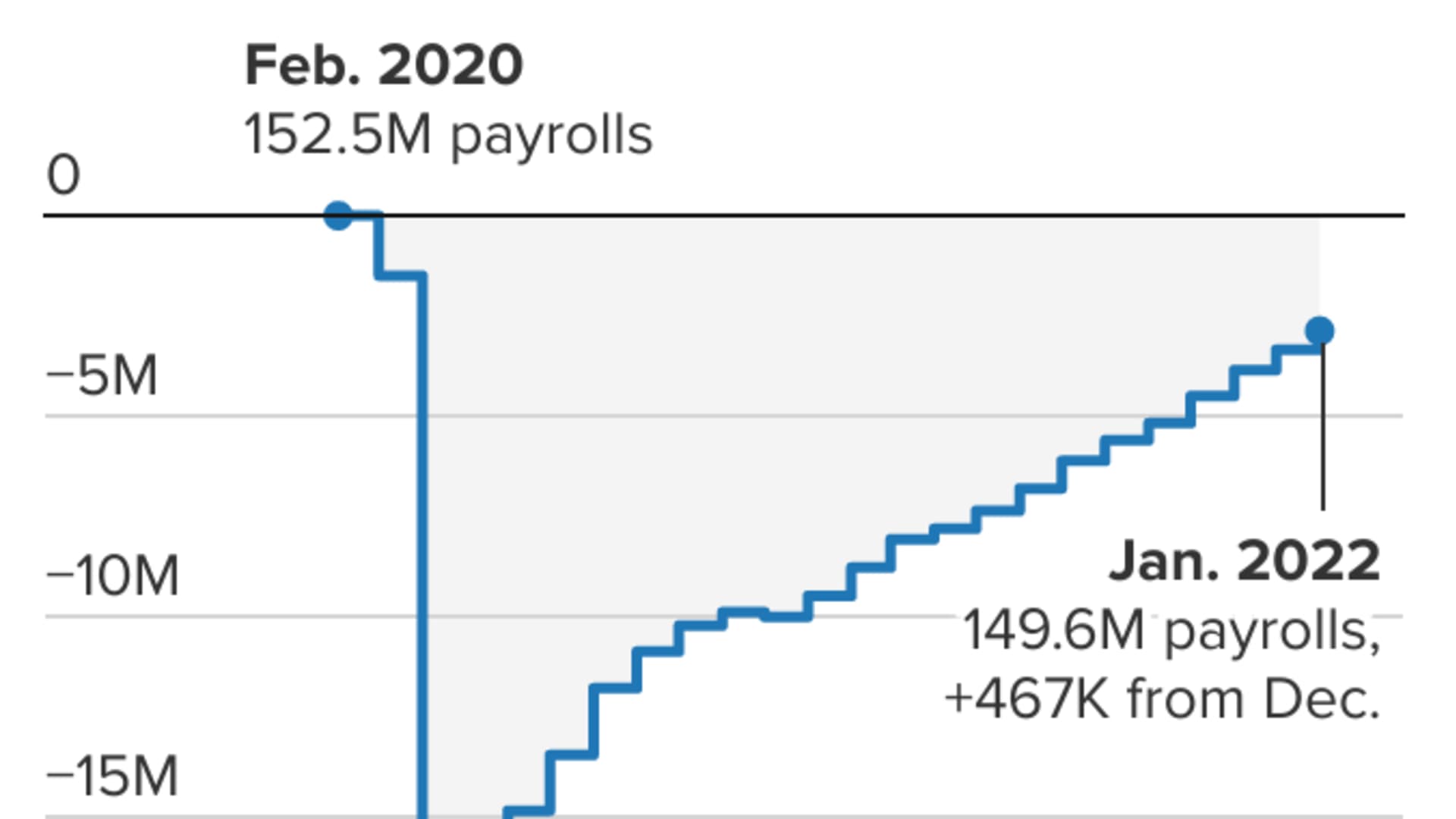
- The number of long-term unemployed fell by 317,000 from December, according to the January jobs report issued Friday.
- There are now 1.7 million Americans out of work at least six months. They accounted for 25.9% of all unemployed workers in January, down from 31.7% a month earlier.
- Long-term unemployment poses serious financial risks for households, at a time when federal benefits have expired.
Long-term unemployment fell significantly in January, continuing a downward trajectory from its pandemic-era peak after having plateaued in recent months.
The number of Americans out of work for at least six months declined by 317,000 since December, to about 1.7 million in January, according to U.S. Department of Labor data issued Friday.

Feeling out of the loop? We'll catch you up on the Chicago news you need to know. Sign up for the weekly Chicago Catch-Up newsletter here.
The long-term unemployed accounted for 25.9% of all unemployed Americans in January, down from 31.7% the month prior.
That monthly decline (5.8 percentage points) is the largest since March 2021, when long-term joblessness began a steady descent. Until January, the share had leveled off around 32% over the three prior months.

"What we've seen over the last year is a steady stream of workers back into the labor force and employment," said Daniel Zhao, a senior economist at the career site Glassdoor.
Money Report
"Long-term unemployment is a reflection of that," he added. "As the recovery marches on, more opportunities open up for workers who've been unemployed for a longer period of time."
Financial risks
Long stretches of unemployment pose serious financial risks for households. And a big share of long-term-jobless workers can weigh on the U.S. economy.
Aside from a prolonged lack of job income, it becomes more difficult to find another job as unemployment drags on. The odds of earning a lower future wage also increase.
More from Personal Finance:
What to be wary of before taking on private student loans
Big raises last year might not keep pace with inflation
Going abroad? Your destination may require travel insurance
Skills may get rusty and connections to the workforce (like old networks and industry friends) break down. Businesses more readily pass over resumes with a big gap in work history.
The long-term jobless are also typically ineligible for unemployment benefits. A federal pandemic-era program paying benefits to such workers ended on Labor Day (and a few months earlier in many states).
Omicron surprise
Declining long-term joblessness came on the back of an unexpectedly strong January jobs report on Friday.
The U.S. economy added 467,000 jobs last month. The Labor Department also revised its job-growth estimates for November and December much higher — there were a combined 709,000 more jobs added those two months than initially thought.
Many economists had predicted a much weaker showing due to a surge of Covid-19 cases since early December fueled by the highly contagious omicron variant.
Elevated daily caseloads led some businesses to close their doors temporarily as illness caused staffing shortages and led to reduced customer demand.

"Job growth can plow forward in the face of pandemic headwinds," Zhao said.
However, the labor market hasn't yet fully recovered to its prepandemic strength. While overall number of long-term unemployed fell by about 2 million people during 2021, their ranks are still 570,000 larger than in February 2020.
The U.S. economy also remains almost 3 million million jobs short of its prepandemic mark.
"I think we are on track for a strong job market recovery," Zhao said. "But we're not quite at the finish line yet."






